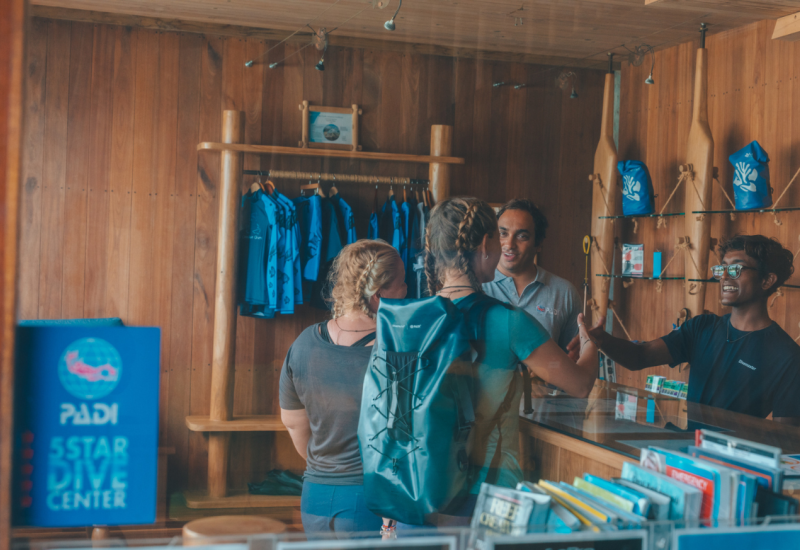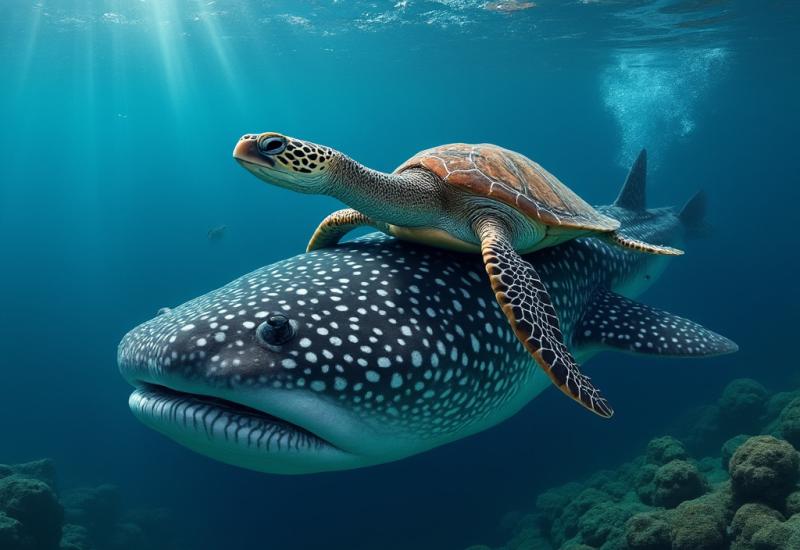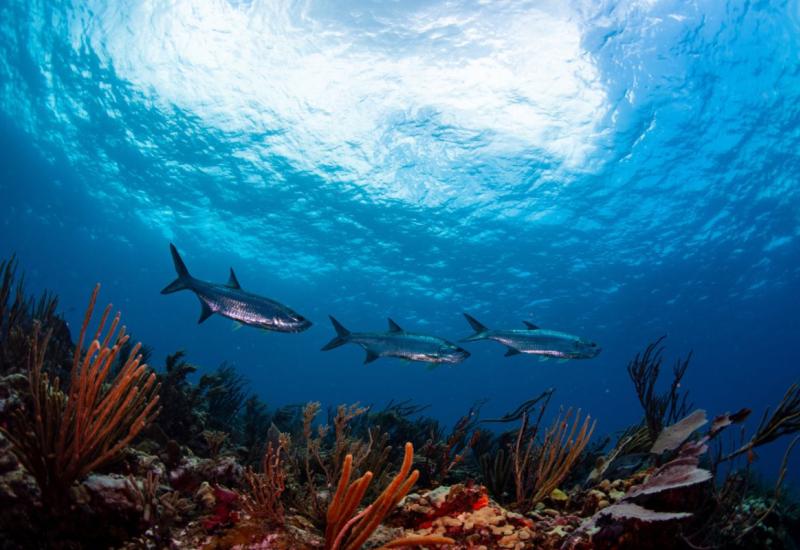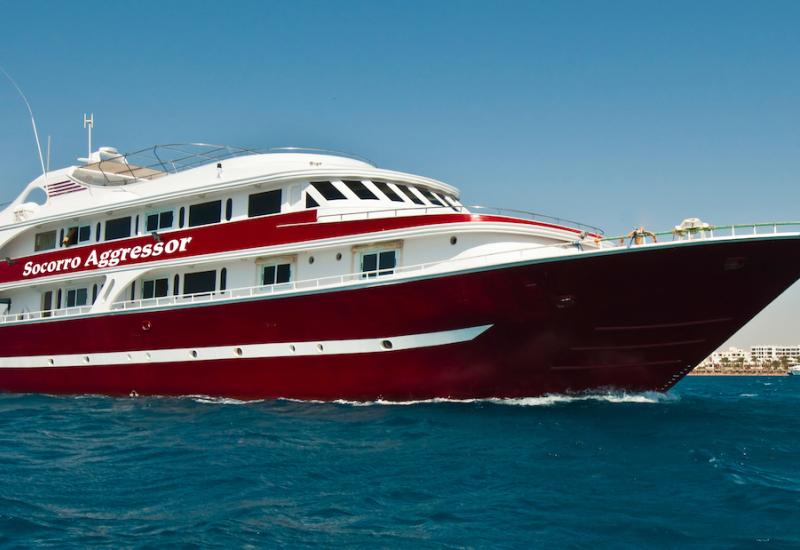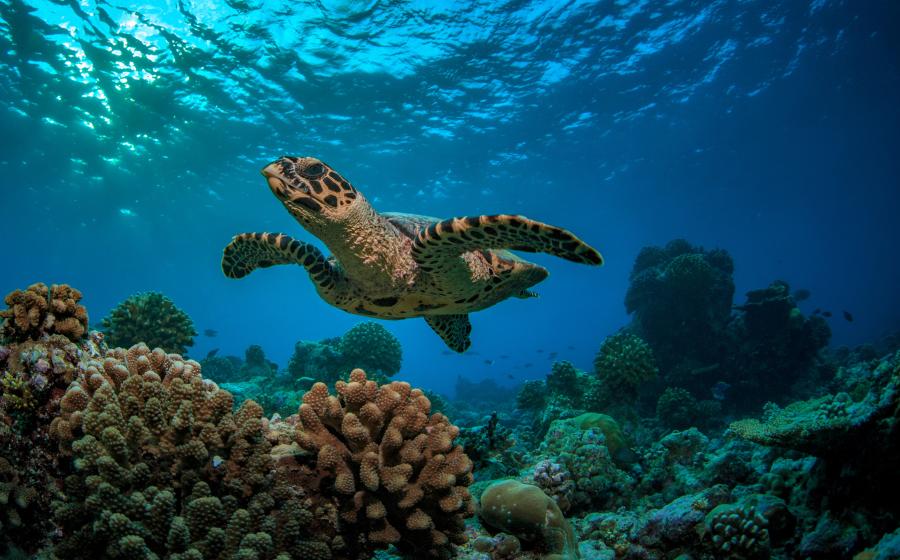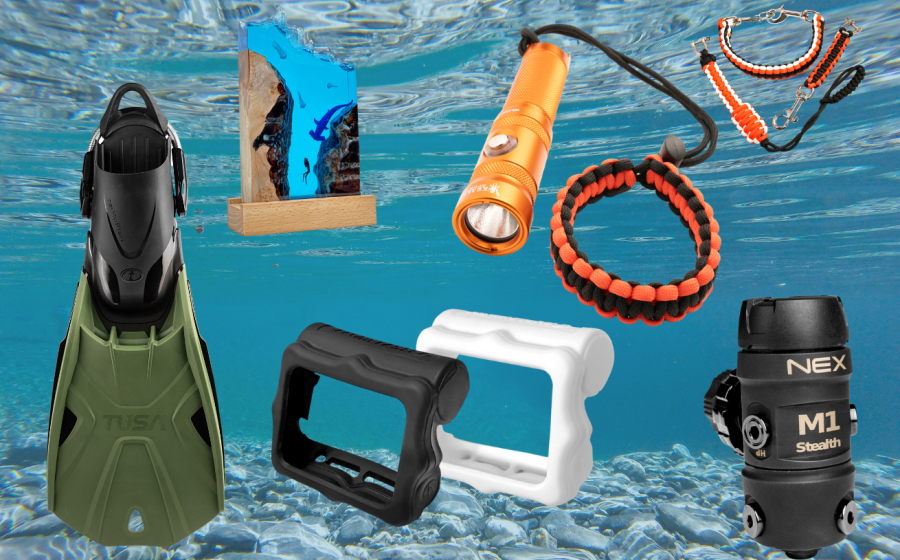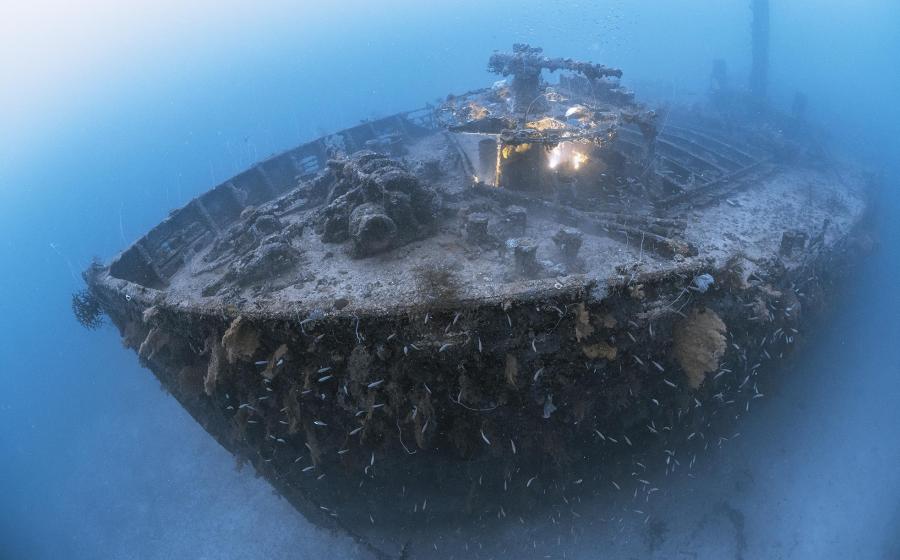Diving The Enchanting Galapagos Islands
My active imagination can easily envision marine iguanas crawling forth from the volcanic hot spot below. Or sharks riding riotous currents from far-flung seas to these islas encantadas. But how to explain the UFO wobbling in front of me now?
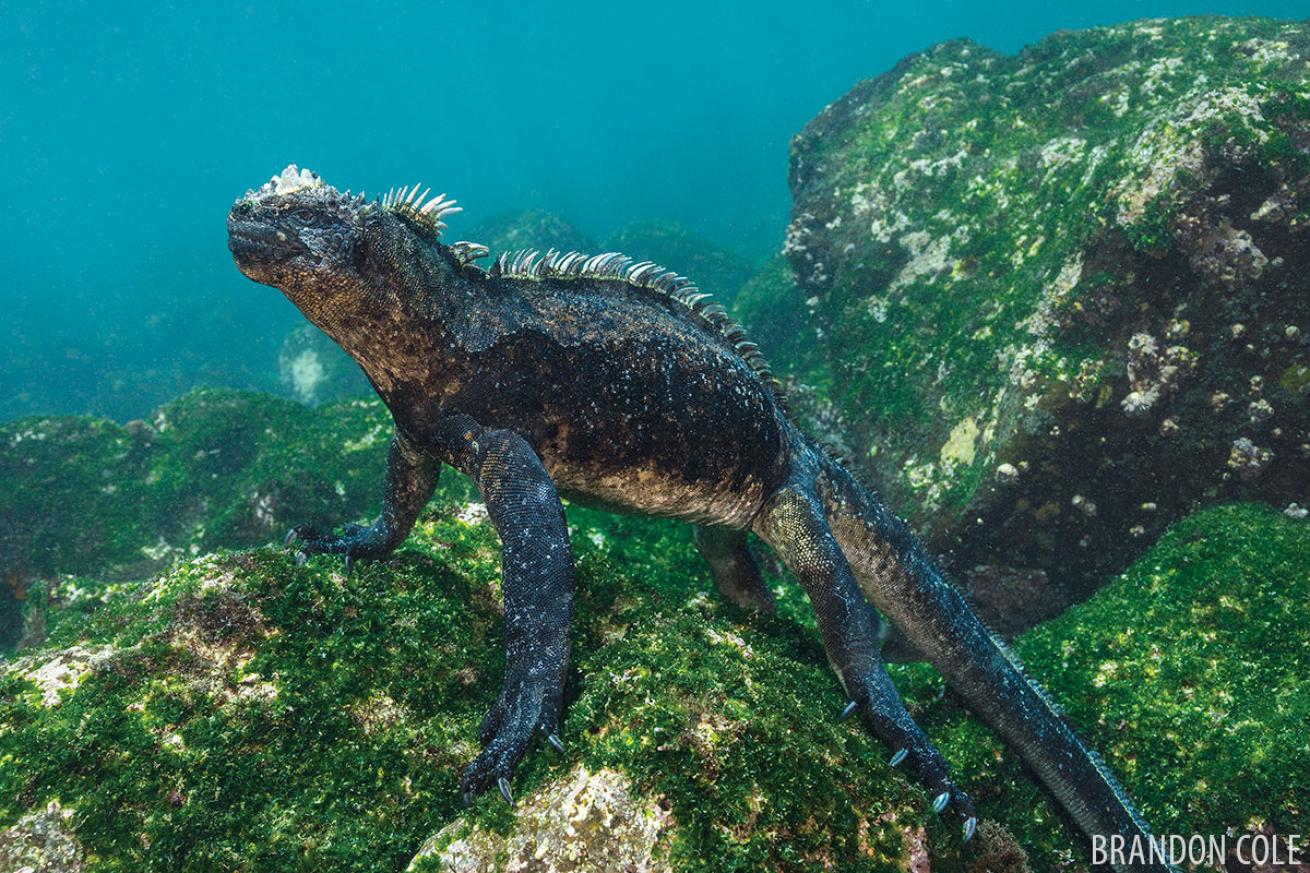
Brandon ColeA marine iguana feeds on algae off Fernandina Island.
From whence cometh this freakish object? Larger than my kitchen table, the gentle-gazed mola mola with puckered lips defies understanding. Even here in the Galapagos, it is so spectacularly weird that my brain lurches and I forget about the invigoratingly cool water.
That’s the only thing I’ll be forgetting. The rest of our adventure aboard the Galapagos Aggressor III luxury liveaboard is indelibly seared into memory. Fist pumps and happy dances celebrated seeing Mrs. Big (a 30-foot-long whale shark) at Darwin’s Arch. Hearts thumped and eyes bulged courtesy of strong currents and a wall of hammerhead sharks at Wolf Island’s Landslide. Red-lipped batfish grimaced at our cameras at Fernandina Island. Sea turtles soared above us everywhere we dived. Dizzying arrays of yellowfin surgeons, barracuda, creolefish and bigeye jacks enveloped us into their schools. Each time we back- rolled off the pangas into the blue, our logbooks couldn’t help but fill themselves with tales of the extraordinary.
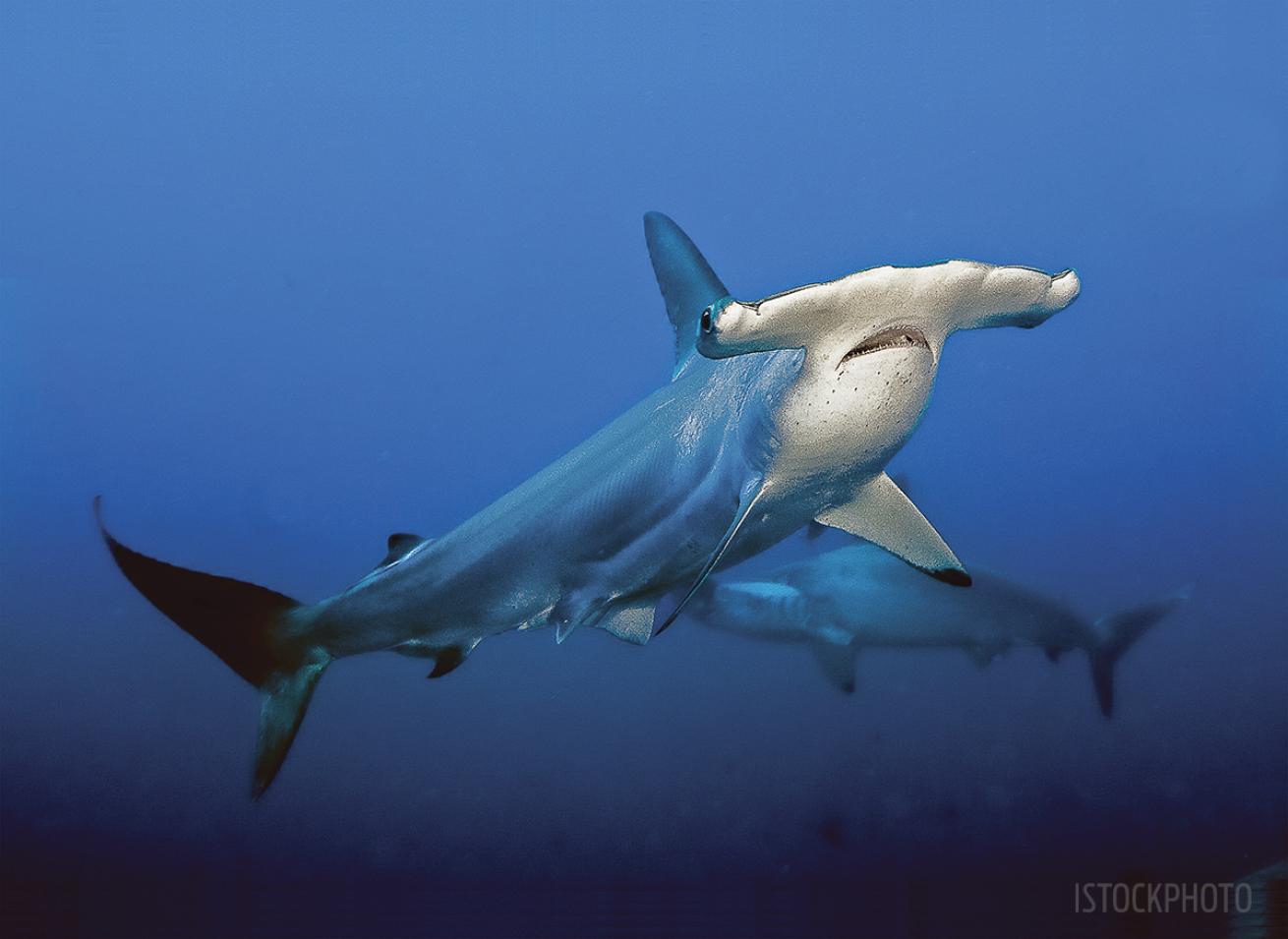
iStock PhotoIn December, more plankton means big animals, including hammerheads, and a high chance of whale sharks at Darwin.
Granted, it wasn’t any more ordinary when we gave our gills a break during surface intervals. Mobs of iguanas were piled atop lava flows, soaking up the sun. Blue-footed boobies proudly displayed their fancy footwear. And no trip to Galapagos would be complete without giant tortoises. Musing in Aggressor’s hot tub, replaying the images winging around my head like the frigate birds currently wheeling gracefully above, I can’t help but feel sorry for Charles Darwin. Without scuba, he only saw half the show. Even such a progressive thinker couldn’t have imagined the wonders waiting below.
WHEN TO GO
Galapagos is superb year-round. January to May is the warm season and sometimes called manta season. In December, more plankton means big animals, including hammerheads, and a high chance of whale sharks at Darwin.
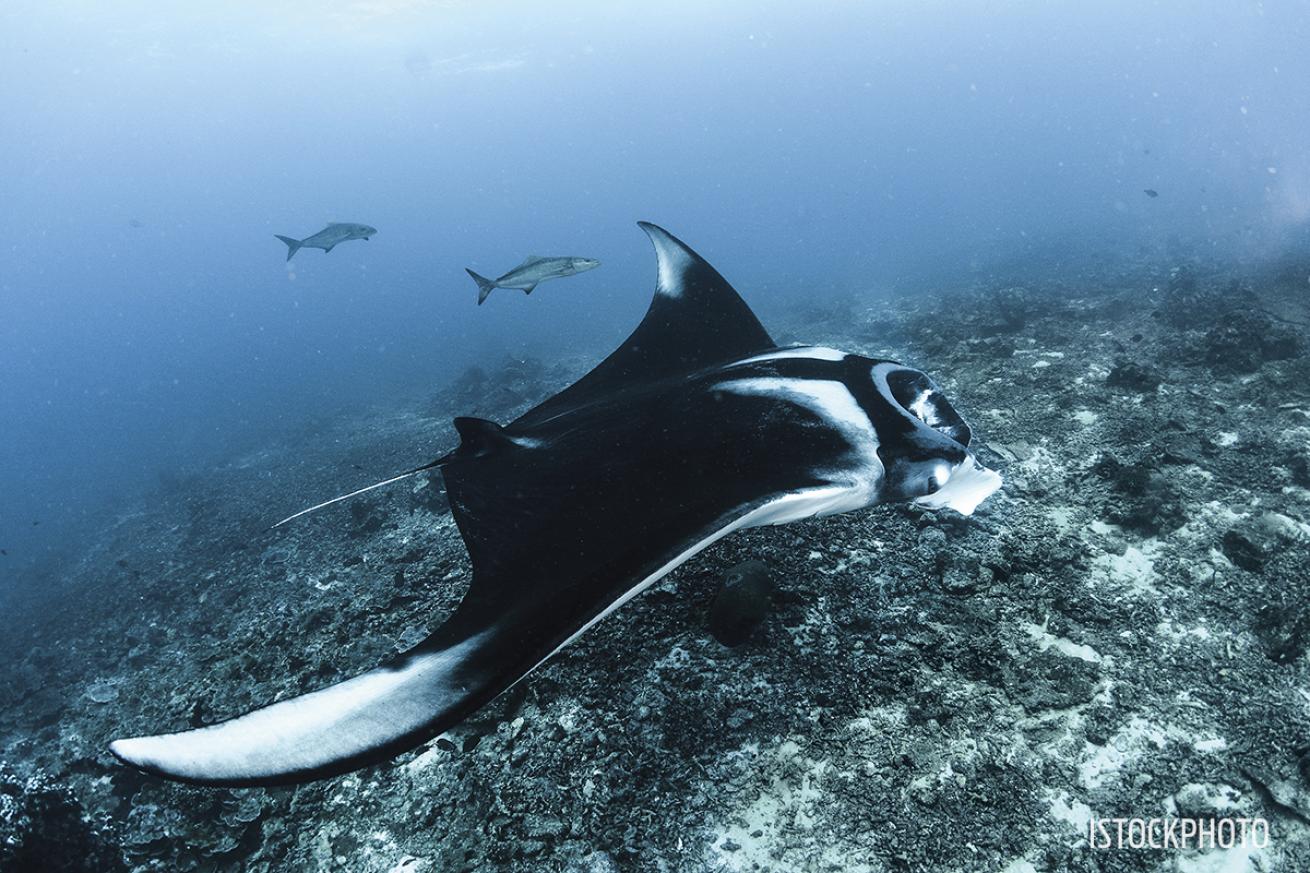
iStock PhotoManta ray in the Galapagos Islands
ITINERARY
Day 1
We kick things off with a meet-and- greet at Ecuador’s Guayaquil airport, fly to Baltra and board Aggressor. The checkout dive in Itabaca Canal yields new critters for first-timers to the eastern Pacific Ocean region.
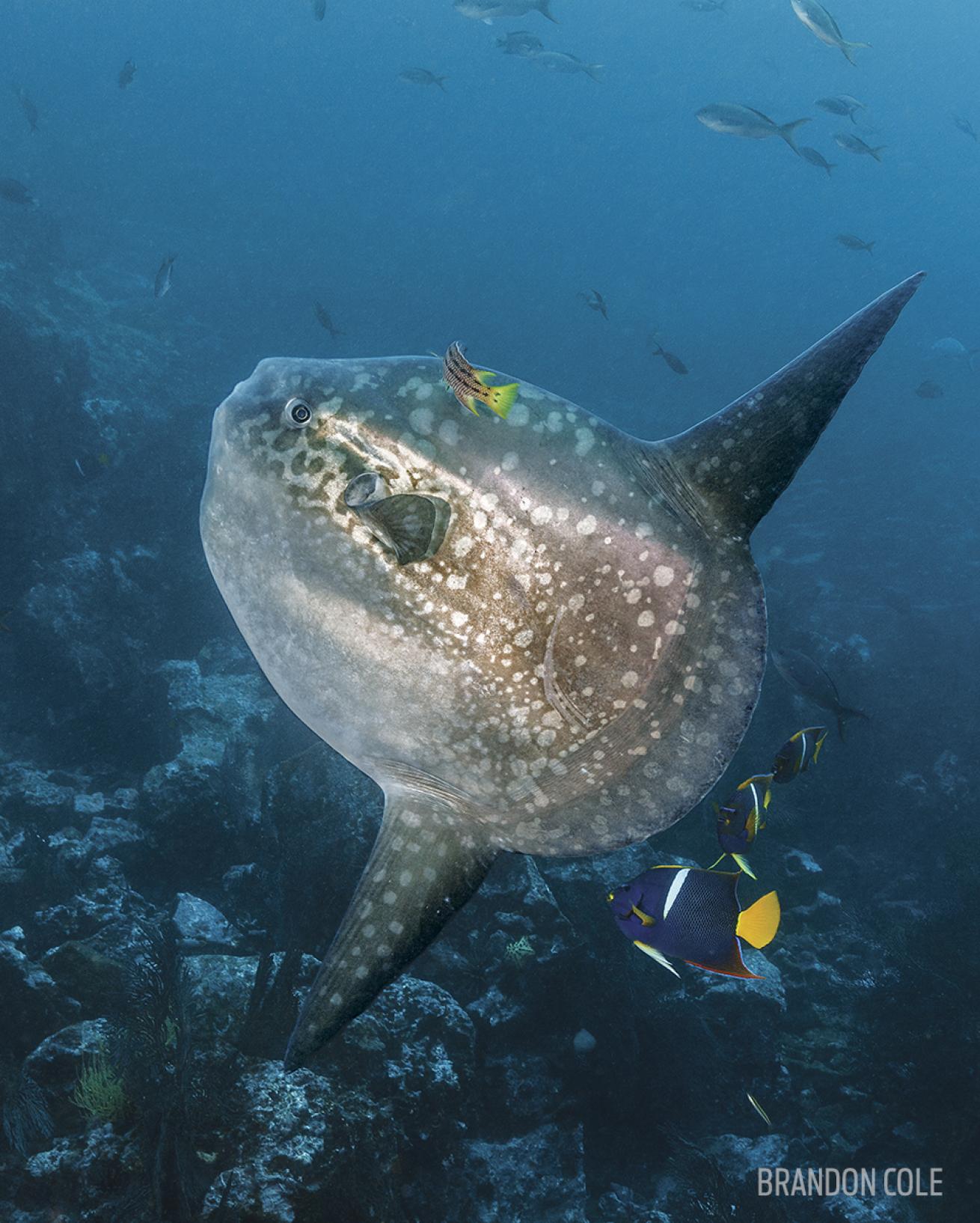
Brandon ColeA 6-foot mola mola — aka oceanic sunfish — ventures closer to the Galapagos to visit a cleaning station.
Day 2
Mellow morning dives deliver at Punta Carrion and Punta Martinez along volcanic terrain smothered in yellow-black corals. We take an afternoon hike up Bartolome Island, then a panga ride to see penguins.
Day 3
We earn our stripes at Wolf Island, braving strong currents and surge for an elasmobranch extravaganza. We see hammerheads, reef whitetips, Galapagos, silkies and eagle rays, then snorkel with false killer whales!
Day 6
Layered up for cool 65-degree water, we enjoy a phenomenal dive with feeding marine iguanas at Cabo Douglas. Punta Vicente Roca delivers sea lions, seahorses, sea fans and sea freaks (molas).
THE BOAT
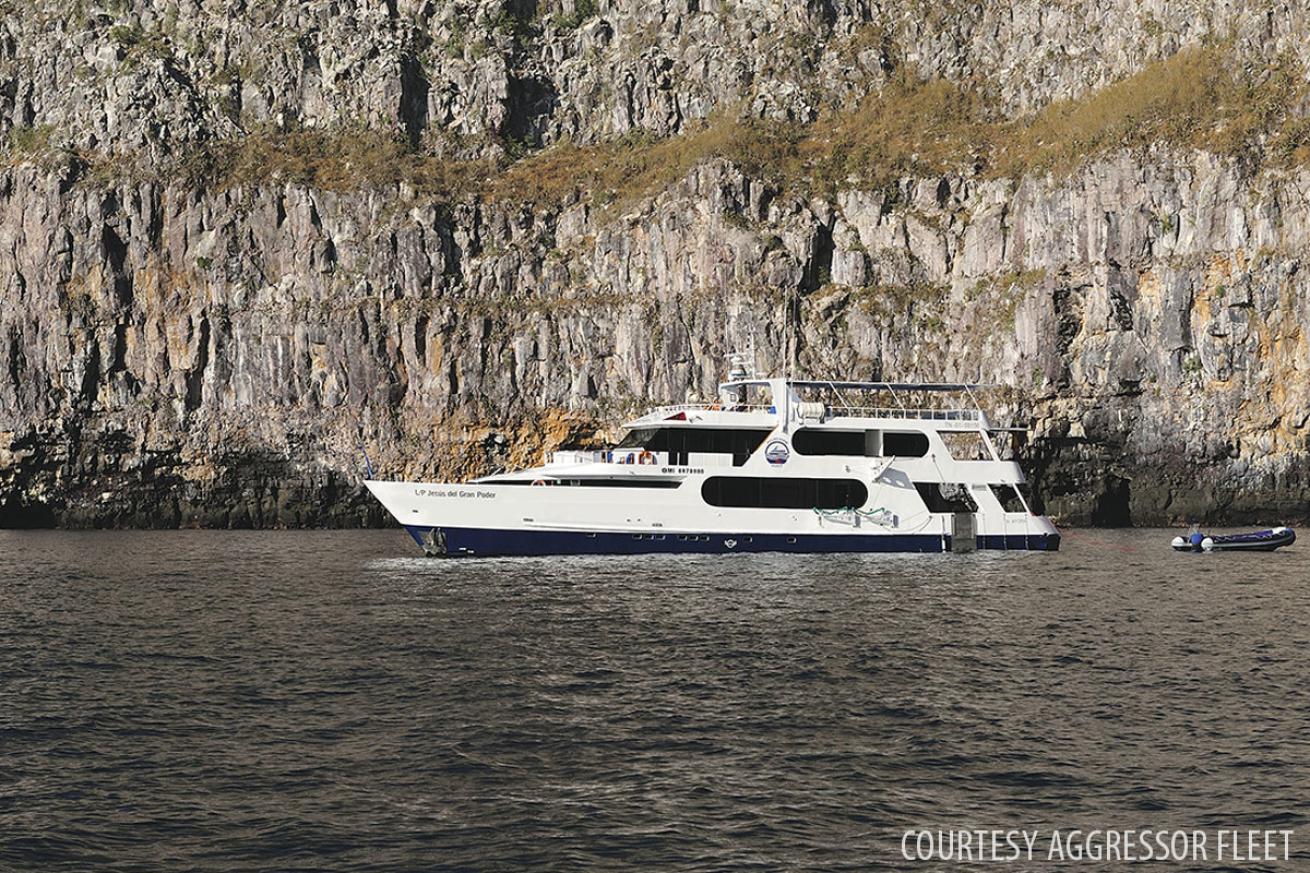
Courtesy Aggressor FleetGalapagos Aggressor III, at anchor.
Galapagos Aggressor III
Total passengers: 16
Cabins: 8
Total crew: 9
Length: 100 feet
Beam: 22 feet
Number of decks: 4
IN DEPTH
Practice Stewardship Conservation is key to preserving this UNESCO World Heritage Site. Respect the rules and wildlife, travel green and support conservation efforts.
Look for Macro Critters Famous for big animals, Galapagos’ macro subjects are often overlooked. There are horn sharks, cleaner shrimp, scorpionfish, seahorses, nudis, etc.

